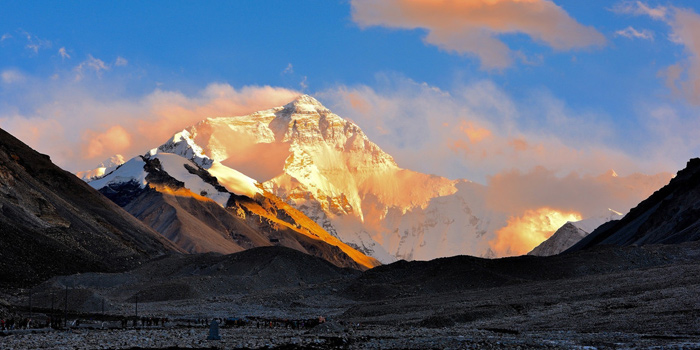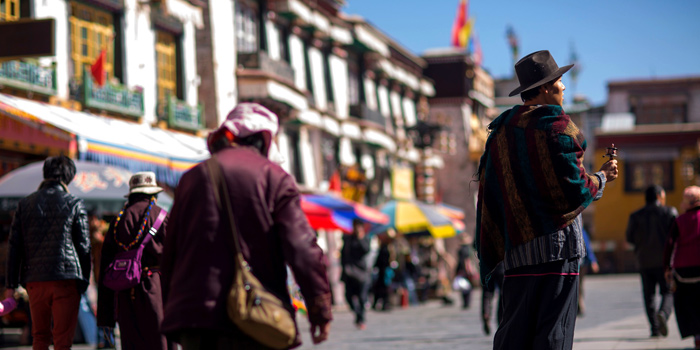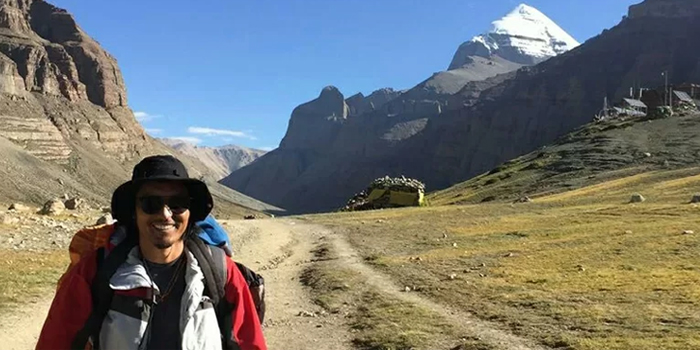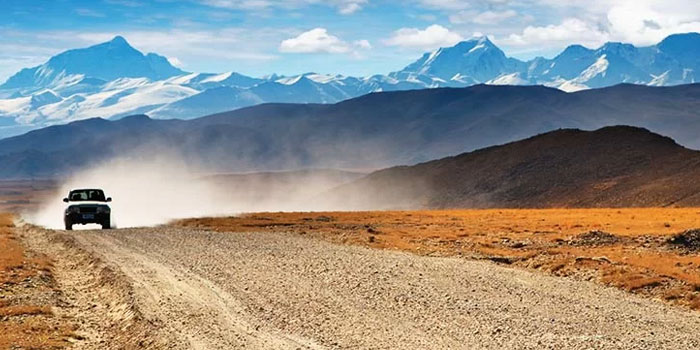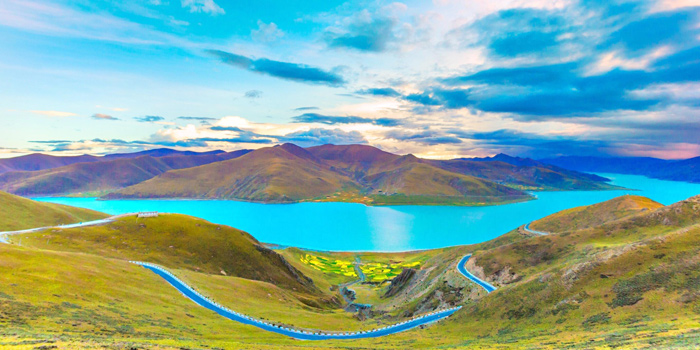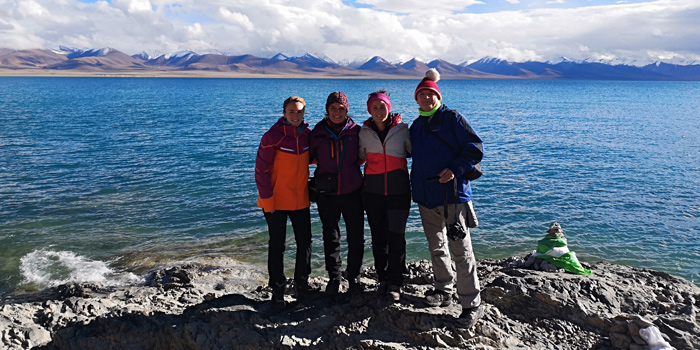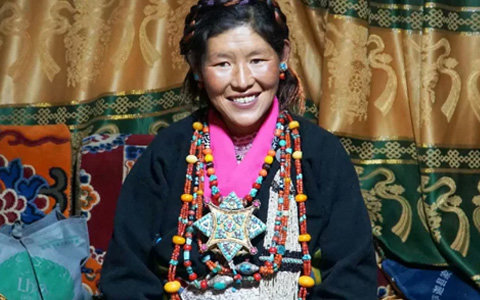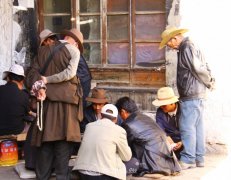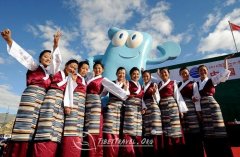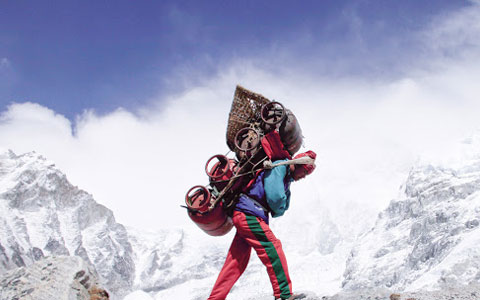Your Guide to Tibetan People and Cultural Life
Tibetan people preserve a rich culture of unique spirituality and traditions. Their cultural life is a living expression of the combination of history, environmental influences, and religion that gave rise to the Tibetan way of life.
To help you start to understand the cultural heritage of Tibet, here are 15 facts about Tibetan people and cultural life.
 1. Tibetans are an ethnic group native to Tibet
1. Tibetans are an ethnic group native to Tibet
 2. Tibetan people are not limited to residing solely in Tibet nowadays
2. Tibetan people are not limited to residing solely in Tibet nowadays
 3. Tibetan people traditionally speak Tibeto-Burman languages
3. Tibetan people traditionally speak Tibeto-Burman languages
 4. Over a dozen different dialects spoken by Tibetan People
4. Over a dozen different dialects spoken by Tibetan People
 5. Tibetan People strongly believe in Tibetan Buddhism
5. Tibetan People strongly believe in Tibetan Buddhism
 6. Tibetans engage in practices like kora and prostration, which are rarely seen in other places
6. Tibetans engage in practices like kora and prostration, which are rarely seen in other places
 7. Tibetans consider the Jokhang Temple and Mount Kailash as their most sacred pilgrimage sites
7. Tibetans consider the Jokhang Temple and Mount Kailash as their most sacred pilgrimage sites
 8. Tibetan People have a unique idea of Death and Reincarnation
8. Tibetan People have a unique idea of Death and Reincarnation
 9. Traditionally, most Tibetans are nomadic rather than farmers
9. Traditionally, most Tibetans are nomadic rather than farmers
 10. The staple food of Tibetan People is the highland barley unique to the Tibet Plateau
10. The staple food of Tibetan People is the highland barley unique to the Tibet Plateau
 11. Trade has been an integral part of Tibetan life
11. Trade has been an integral part of Tibetan life
 12. Tibetan people dress according to the challenging climate of the Tibet Plateau
12. Tibetan people dress according to the challenging climate of the Tibet Plateau
 13. Tibetan People have clear gender roles for males and females
13. Tibetan People have clear gender roles for males and females
 14. Tibetan People Place Importance on Family
14. Tibetan People Place Importance on Family
1. Tibetans are an ethnic group native to Tibet
The vast and rugged landscapes of Tibet are home to the indigenous Tibetans. Believed to be descended from the ancient Qiang people, their deep-rooted history and unique cultural heritage have been shaped by centuries of living in the challenging, high-altitude terrain of the Tibetan Plateau.
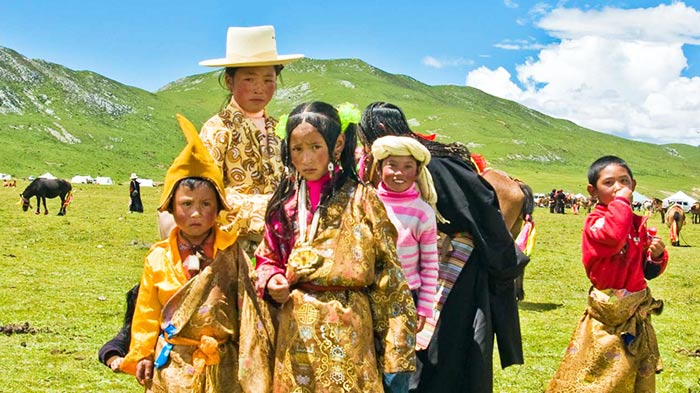 Tibetans are native to Tibet
Tibetans are native to Tibet
Myths trace their history back thousands of years with the belief that the people were born out of the marriage of the monkey, Pha Trelgen Changchup Sempa and the rock ogress, Ma Drag Sinmo.
Today, the Tibetan people continue to maintain a strong sense of their cultural identity that is deeply intertwined with the region’s unique geography, language, and spiritual beliefs.
2. Tibetan people are not limited to residing solely in Tibet nowadays
Nowadays, Tibetan communities have expanded beyond the border of Tibet Autonomous Region. In Sichuan, Qingahi, Gansu, and Yunnan, Tibetan inhabited areas thrive. This allows for an immersion in Tibetan culture without entering Tibet itself. If you want to experience Tibetan culture without Tibet Travel Permit, you can choose to visit the Tibetan inhabited areas in these provinces.
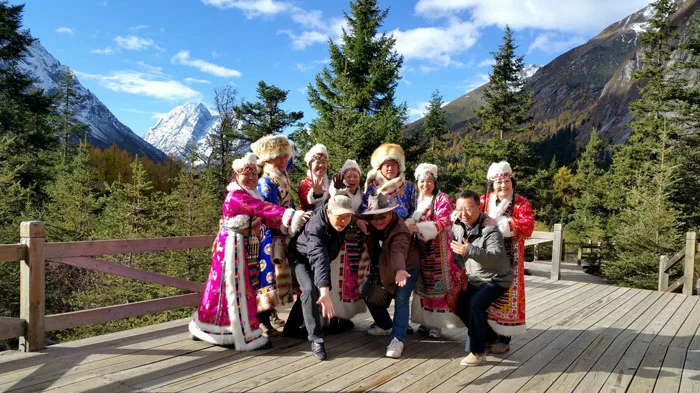 Sichuan Tibetan people.
Sichuan Tibetan people.
Of cause, the true essence of Tibetan culture and its people remains most authentic within Tibet, as these areas have also been influenced by local Han or other communities.
3. Tibetan people traditionally speak Tibeto-Burman languages
The linguistic heritage of Tibet is rooted in the Tibeto-Burmese language family, a group of languages spoken across the Himalayan region and parts of Southeast Asia. Tibetan is the primary language, but has several distinct dialects that have arisen from the geographic isolation of different regions.
Tibetan languages play an important role in preserving the local culture as Tibetan people have rich oral traditions in history and religious teachings. There is also a unified written Tibetan script that fosters a sense of common culture and identity among the different Tibetan groups.
4. Over a dozen different dialects spoken by Tibetan People
Arising from the spread of the Tibetan diaspora, dozens of dialects are now spoken by Tibetan people in different areas. Lhasa Tibetan, spoken in and around the capital of Tibet, is considered the standard dialect. Away from Lhasa, Khamba and U-Tsang are spoken in other parts of Tibet, and places in China such as Yunnan, Qinghai, and Sichuan, are home to Amdo and Kham Tibetan.
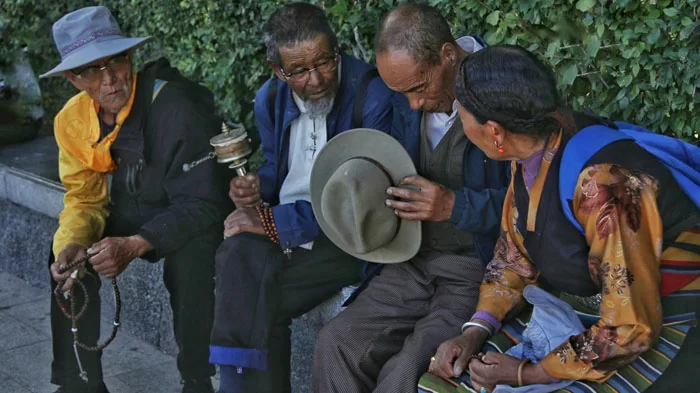 Lhasa Tibetan is considered the standard dialect in Tibet.
Lhasa Tibetan is considered the standard dialect in Tibet.
Outside of Tibet, Dzongkha is a Tibetan dialect that is the official language of Bhutan. Other dialects such as Dolpo are spoken in Nepal, and Ladakhi in India.
5. Tibetan People strongly believe in Tibetan Buddhism
Tibetan Buddhism is an inseparable facet of Tibetan cultural identity. Deeply rooted in history and daily life, the teachings of Tibet Buddhism, with its focus on compassion, mindfulness, and the pursuit of enlightenment, have shaped the values, customs, and interactions of Tibetan people.
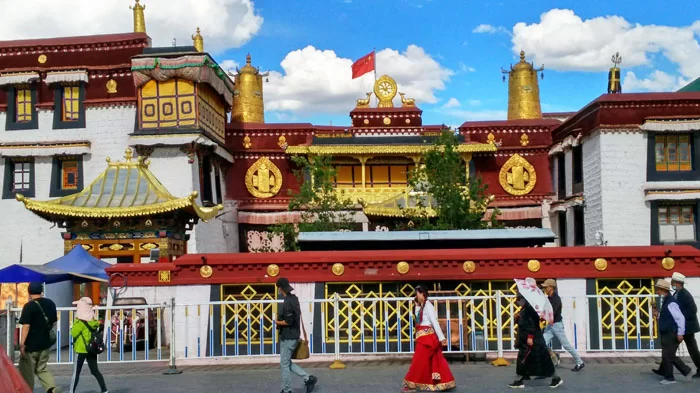 Tibetan Buddhism is Tibetan People strongly believe.
Tibetan Buddhism is Tibetan People strongly believe.
Tibetan monasteries, stupas, and prayer flags stand out as visual symbols of the people’s deep spirituality. Throughout their entire lives, Tibetans seek guidance from Buddhist rituals, seeking blessings for newborns, consulting lamas for important decisions, and conducting elaborate ceremonies for the deceased.
6. Tibetans engage in practices like kora and prostration, which are rarely seen in other places
Kora and prostration are distinctive religious practices of Tibetan culture and unique expressions of spiritual devotion deeply embedded in their way of life. Kora, exemplified by the revered Mount Kailash kora, is a meditative journey involving circumambulating sacred sites such as temples or mountains. It's a way to pay homage, cleanse karma, and accumulate merit, the embodiment of the spiritual journey. Prostration involves a physical display of devotion by lying flat on the ground, sometimes fully extending the body, which signifies humility before higher powers.
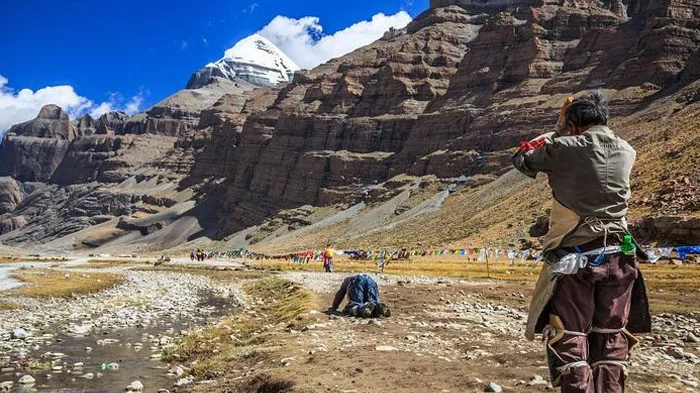 Tibtetan pilgrims do prostration during kora around Mount Kailash.
Tibtetan pilgrims do prostration during kora around Mount Kailash.
Kora and prostration intricately weave a tangible bridge between the terrestrial and the celestial, acting as poignant reminders for Tibetans of their profound spiritual origins amid the complexities of modern life. Upon your visit Tibet, you'll witness devoted pilgrims earnestly engaging in these time-honored practices, further enriching your understanding of their spiritual connection and cultural heritage.
7. Tibetans consider the Jokhang Temple and Mount Kailash as their most sacred pilgrimage sites
The most sacred pilgrimage sites in Tibet, often visited during a Tibet tour, are Jokhang Temple and Mount Kailash. Pilgrims are drawn from all over to express their devotion in these places that represent the spiritual essence of Tibet.
Nestled at the heart of Lhasa, the Jokhang Temple stands as a testament to intricate architecture. Within its walls resides the venerated Jowo Rinpoche statue, a living representation of Buddha's essence.
In a realm of spiritual importance for multiple faiths, Mount Kailash beckons pilgrims to embark on its transformative path, the Kailash Kora. Completing this sacred circuit signifies more than a journey; it's a passage to enlightenment, a rite to cleanse karma, drawing seekers into an ethereal realm of personal growth.
8. Tibetan People have a unique idea of Death and Reincarnation
Death and reincarnation hold significant importance in Tibetan Buddhism, and the Tibetan people all devoutly believe that they will one day achieve enlightenment and rise to a higher plane of existence. Daily life and spiritual practices have significance for how Tibetans believe they will be reincarnated.
They believe that people ruled by destructive desires and emotions will have their next lives dictated by karma until they can become more enlightened. Those who can harness the power of prayer or compassion in a way that benefits others will be voluntarily reincarnated. They will be able to choose the circumstances of their rebirth to best benefit mankind and ensure the continuity of their spiritual journey to true enlightenment.
The distinct outlook on life and death has led to some unique funeral customs in Tibet, like the enigmatic sky burial and water burial. When you're traveling in Tibet, remember to show deep respect for the local culture.
9. Traditionally, most Tibetans are nomadic rather than farmers
The rugged terrain of the Tibetan Plateau is more suitable for a nomadic lifestyle than settled farming. Traditional nomadic living allowed the Tibetan people to adapt to the challenges of the environment, moving their herds of yak, sheep, goat, and other livestock to areas with better grazing during different seasons, preventing overgrazing and soil depletion.
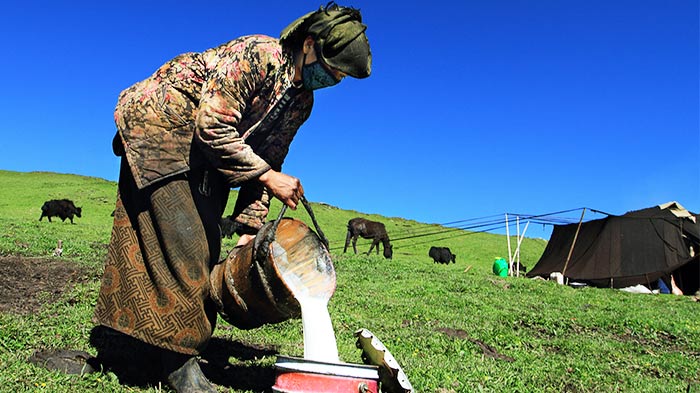 Traditional nomadic lifestyle of Tibet
Traditional nomadic lifestyle of Tibet
Tibetan nomads used traditional tents made of yak hair and wool, which were easily assembled and disassembled. With many people there settled to permanent homes today, the nomadic heritage nevertheless remains an integral part of Tibetan culture and identity.
10. The staple food of Tibetan People is the highland barley unique to the Tibet Plateau
Tibetan cuisine centers around highland barley, a staple that sustains the people. Traditionally ground and roasted into "tsampa," this versatile food source takes on various forms, including being mixed with butter tea for a nutritious and energy-boosting meal. To experience its unique taste, consider visiting a Tibetan local teahouse during your Tibet tour.
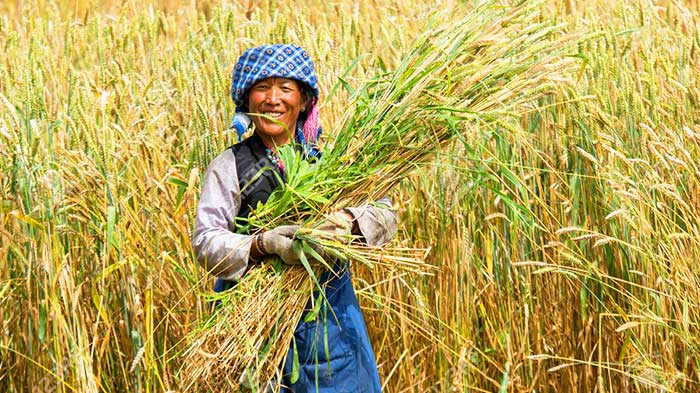 Tibetan Agriculture
Tibetan Agriculture
11. Trade has been an integral part of Tibetan life
In Tibet, trade has a long history, dating back to the days of the ancient Tea Horse Road and the Salt Trade Rout. Evidence exists of Tibetan trade dating back before the 7th century, and the export of raw materials, herbs, and gemstones has been going on between Nepal, India, and inland China for over 1,500 years.
The significance of trade has gone beyond economics, influencing art, architecture, and language. This commercial interchange nurtured the emergence of a unique Tibetan aesthetic, evident in intricately crafted textiles, jewelry, and artifacts.
12. Tibetan people dress according to the challenging climate of the Tibet Plateau
The Tibetan Plateau is a challenging and often harsh environment that makes demands on what people can wear. Tibetan clothing, well-suited to the arid climate, blends tradition and utility.
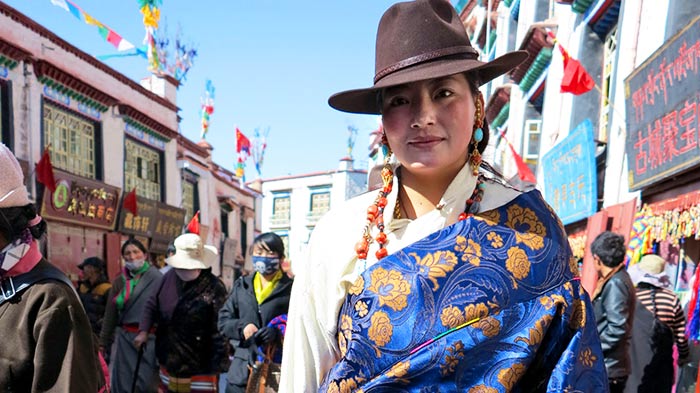 Traditional Tibetan Clothing
Traditional Tibetan Clothing
For men, clothes are loose-fitting and bold in design, with colorful garments and strong, leather boots, while for women, the clothing is loose and elegant, allowing them to move gracefully, and with bold colorful patterns to the fabric. Shirt or dress sleeves are traditionally a lot longer than their arms and become more noticeable when they dance, with the ends of the sleeves flailing around them in intricate patterns.
13. Tibetan People have clear gender roles for males and females
The roles of men and women in Tibetan society have been stable for thousands of years, with the women taking care of the home and their husbands, looking after the children, cooking, and doing minor work in the fields and nomadic villages. Men take on the role of providing for their family by working with livestock or crops, or in trade or construction jobs.
However, it shouldn’t be thought that women are voiceless in Tibetan society. Before marriage, women are often very open in voicing their opinions, and they have a lot of power within the family unit.
14. Tibetan People Place Importance on Family
In Tibet, families are really important. They are like the strong foundation of the community. Tibetan people there are very close with not only their parents and siblings, but also with their extended family members like cousins and aunts. Older people, like grandparents, are highly respected because they have a lot of wisdom. It's common for many generations to live together in the same house.
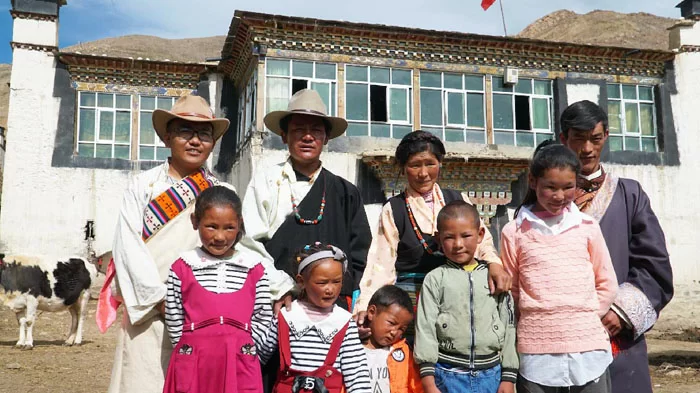 Tibetan people place importance on family.
Tibetan people place importance on family.
Tibetan families have special celebrations and events throughout the year that show how much they value their parents and ancestors. They work and celebrate together, which helps them feel like they belong and need each other. This teamwork is crucial for keeping their traditions and culture alive and well.
15. Tibetan People are warm and hospitable
Tibetan people are well-known for being friendly and welcoming to both guests and their own community. The tough environment they live in has made them value sharing and helping each other a lot.
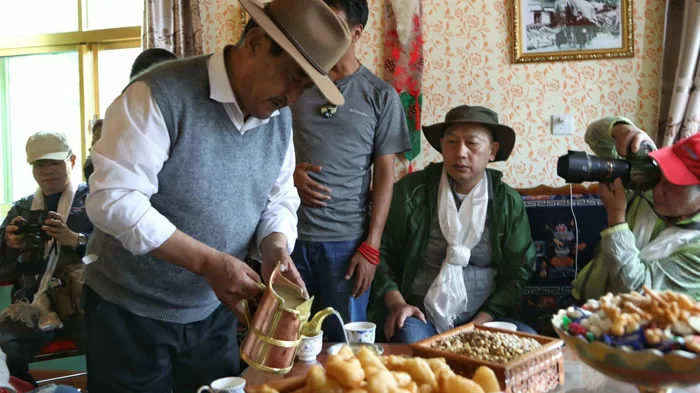 The warm and hospitable Tibetan people.
The warm and hospitable Tibetan people.
When visitors come, they are treated with real kindness. They get offered tea and food right away. Tibetan homes are famous for being cozy, and hosts make sure guests feel really comfortable. This friendly attitude isn't just for visitors; it's also there during religious events and festivals, where everyone is made to feel like part of the group. So, if you're planning to travel to Tibet, get ready for a warm welcome!
Conclusion
The unique culture of the Tibetan people can be seen in all aspects of their life. From the food they eat, and the clothes they wear, to the languages they speak, almost everything about Tibetan people is an expression of their cultural heritage.
Immersing yourself in Tibetan culture is one of the many great reasons to visit Tibet. Get in touch with us to find out more about how you can experience the traditional way of life that still thrives there today.

Kham Sang is responsible and honest with more than six years of guide experience in Tibet.She has strong interpersonal skills and can communicate effectively with tourists.
Most Popular Tibet Tour Packages
-
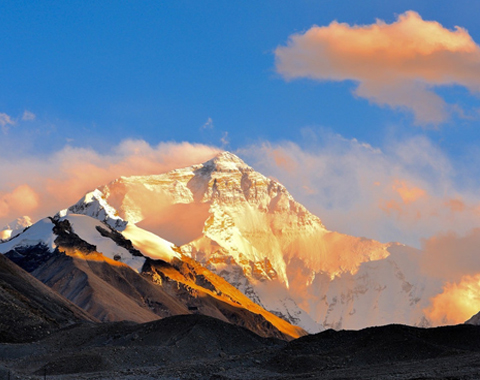
Lhasa - Gyantse - Shigatse - Everest Base Camp - Shigatse - Lhasa
USD939
View Details -
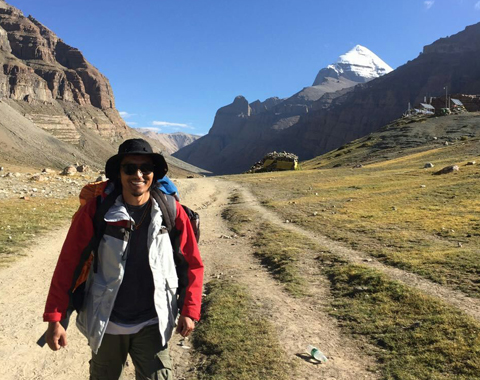
Lhasa - Gyantse - Shigatse - E.B.C - Saga - Kailash Trek - Darchen - Lake Manasarovar - Saga - Gyirong - Tingri - Lhasa
USD2059
View Details -
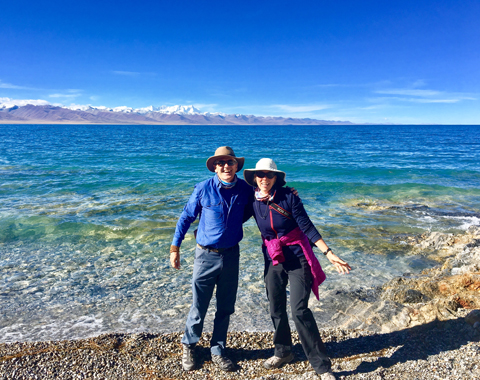
10 Days Lhasa to Everest Base Camp and Namtso Lake Small Group Tour
Lhasa - Gyantse - Shigatse - EBC - Shigatse - Lhasa - Namtso Lake - Damxung - Lhasa
USD1289
View Details -
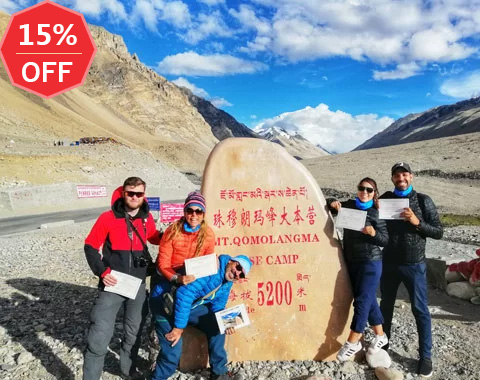
8 Days Driving Across Himalaya Overland Adventure from Kathmandu to Lhasa
Kathmandu - Gyirong - Everest Base Camp - Tingri - Shigatse - Gyantse - Lhasa
USD1069
View Details -
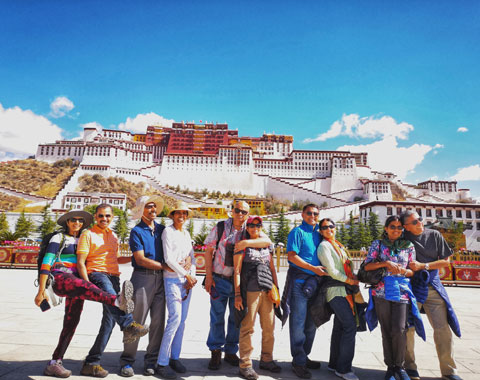
4 Days Lhasa Impression Small Group Tour: Explore the Heart of Tibet and Mingle with the Locals
Lhasa
USD509
View Details -
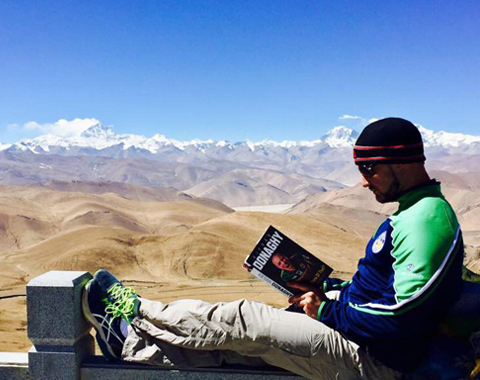
Lhasa - Gyantse - Shigatse - Everest Base Camp - Gyirong - Kathmandu
USD979
View Details -
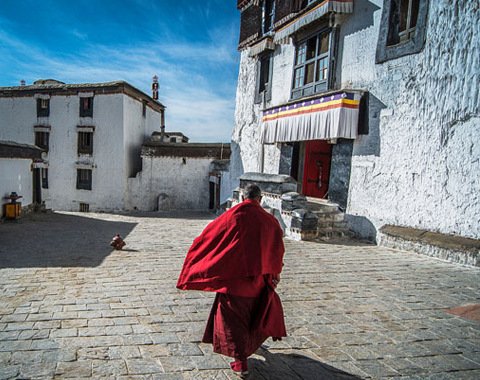
Lhasa - Gyantse - Shigatse- Lhasa
USD799
View Details -
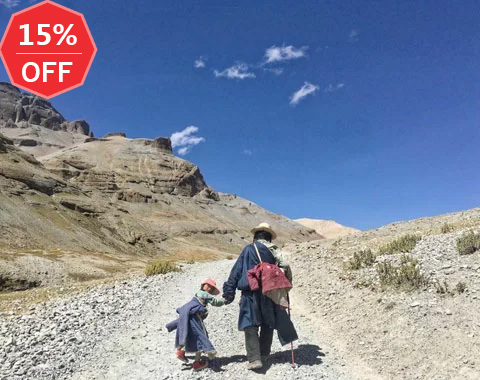
13 Day Lhasa, Mt. Everest, Mt. Kailash, Lake Manasarovar and Kathmandu Adventure Tour
Lhasa - Gyantse - Shigatse - EBC - Saga - Darchen - Kailash Trek - Darchen - Saga - Gyirong - Kathmandu
USD2059
View Details
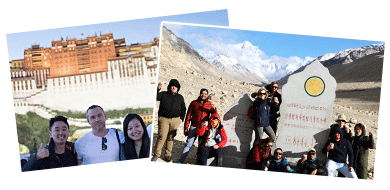

.jpg)



